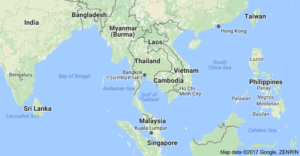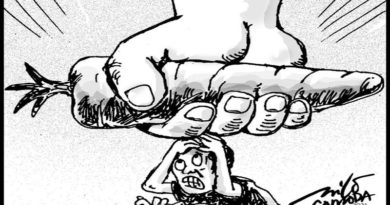ASEAN: Manila – EXCLUSIVE – ‘Asean needs to bridge policy gap’
Asean secretary general Le Luong Minh PHOTO BY FELIPE F. SALVOSA 2nd
.
THE Association of Southeast Asian Nations (Asean) needs to address a gap between high-level policymaking and program execution at the grassroots as it marks its 50th anniversary, the outgoing head of the Asean secretariat said on Sunday.
Vietnamese diplomat Le Luong Minh, who has been the secretariat’s secretary general since 2013, stressed the significance of the milestones achieved by the regional bloc since its establishment in 1967.
However, he added that the Asean needs to rise to the challenge of making sure its decisions benefit the people, especially amid Western criticism that the bloc has become a mere collection of autocrats.
“If it were like that, how could we have achieved the progress that has made us what we are today? An organization, a respectable player, a contributor to world peace and the security and stability of the region, an organization that economically is the sixth largest economy in the world, and an organization that has become even the center of growth, not only in this sub-region but also the wider Asian region,” Minh told The Manila Times.
“On the other hand, like any other intergovernmental organization, we see the challenge in the fact that there are many of the decisions, talks at the high level, and then you need implementation on the ground, the grassroots,” he said.
“[I]t is important for us to realize the challenge, to bridge the disconnect between policy discussion at the high level and to ensure effective implementation on the ground, at the grassroots level,” he added.
Asean is, thus, focused on achieving the “Asean Community Vision 2025,” in which the 10-member bloc vowed to be a more cohesive but globalized sub-region following the establishment of the “Asean Community” in 2015, when regional leaders met for the 27th Asean Summit in Kuala Lumpur.
“[T] he promotion of the community that we are building will continue to be one of the priorities, as we are in the process of realizing Vision 2025, which is to make Asean a globalized, resilient, people-oriented and people-centered community. The participation of all people, stakeholders is indispensable,” he said.
Minh said Asean has its own way of dealing with internal issues, and pointed out that the region is governed by the 1976 Treaty of Amity and Cooperation that sought perpetual peace and stability in Southeast Asia.
The establishment of the Asean Intergovernmental Commission on Human Rights in 2009 is a major milestone in Asean history, Minh pointed out.
Still, Asean is a community wherein countries respect national prerogatives and do not interfere with each other’s internal affairs, he stressed.
“[T]he membership of Asean … the countries are governed by the Treaty of Amity and Cooperation, which is about mutual respect, mutual cooperation, and against non-interference and non-intervention,” he said.
“We see very often a difference in the approach of the member-states and the developed world.”
Minh, who ends his five-year term this year, commended the Philippines for achieving progress in the six “thematic priorities” of its chairmanship of the Asean this year.
The Philippine Asean chairmanship’s priority themes were: “a people-oriented and people-centered Asean; peace and stability in the region; maritime security and cooperation; inclusive, innovation-led growth; resiliency; and Asean as a model of regionalism, a global player.”
“We have seen the initiative that the Philippines has taken, the implementation of these deliverables. Overall, we have seen progress and encouraging developments,” Minh said.
Courtesy: Manila Times |BY FELIPE F. SALVOSA II | ON
>


<>
NOTE : All photographs, news, editorials, opinions, information, data, others have been taken from the Internet ..aseanews.net | [email protected] |
For comments, Email to :
Aseanews.Net | [email protected] | Contributor









